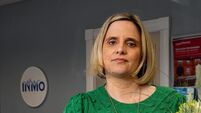Breakthrough in drug testing trials
The Toxichip technology devised at the Tyndall National Institute is already being sought for licensing by international cosmetic and pharmaceutical companies, as the four-year project reaches its end.
Project co-ordinator Dr Eric Moore said a range of uses are possible for the system, which analyses the reactions of animal or human cells to the introduction of chemicals.
His team developed the nanosensors (around one-millionth the size of a needle point) and the system around it that measures how cells bind or spread on the sensors when they are injected with different substances.
“The whole thing is about the size of a television because, as well as the sensors, we have also developed the system and the software that gives images and data on the reactions of cells,” said Dr Moore.
The technology is also of interest to the pharmaceutical industry, which could use the testing system to move quicker to clinical trials on new drugs for cancer and other illnesses. “This test we’re doing here is significantly quicker and cheaper because you’re not dealing with animals, you’re dealing with cells.”
Other uses include food and drink manufacturers testing the reaction of liver or other cells to their products, or for monitoring water quality.
The development is one of several nanotechnology research projects under way at the Tyndall in Cork, where Education Minister Batt O’Keeffe yesterday marked the beginning of Nanoweek.
A series of events over the next few days is designed to highlight the role of nanoscience, the study of how materials behave in very small dimensions.
Schools in Cork, Limerick, Dublin and Galway will be visited by research staff from various third-level colleges, including Trinity College Dublin’s Centre for Research on Adaptive Nanostructures and Nanodevices.
Meanwhile, university presidents have welcomed Máire Geoghegan Quinn’s nomination as EU commissioner for research and innovation, giving her responsibility for the framework programme under which the Toxichip research was funded.












